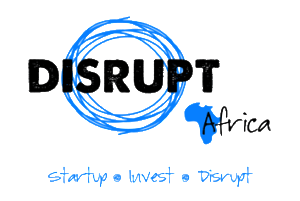With Tron now processing more USDT than Ethereum, the race to become the leading stablecoin infrastructure has intensified and a new Solana-based Layer 2 challenger is drawing attention from serious investors.
In a historic shift, Tron has officially overtaken Ethereum as the dominant network for Tether (USDT), with $73.8 billion in USDT circulating on Tron’s TRC-20 standard, narrowly surpassing Ethereum’s $71.9 billion, according to CryptoQuant data. The milestone reflects how the landscape for stablecoin infrastructure is rapidly evolving and emerging markets are now favouring faster and cheaper blockchain networks for cross-border transfers and remittances.
Tron’s ascent hasn’t come out of nowhere. Analysts point to consistently low fees, faster block finality and an increasingly stable block production structure that makes it attractive to institutions and high-volume users.
Over $14 billion in new USDT has been minted on Tron in just the first five months of 2025 alone. Meanwhile, Ethereum is losing traction due to high gas fees and a shift in user demand toward Layer 2 networks.
Yet, for all Tron’s dominance in stablecoin traffic, the underlying infrastructure is beginning to face fresh scrutiny. The native token TRX has failed to keep up with the network’s utility growth, currently trading nearly 38% below its all-time high.
This divergence between network usage and token performance is spurring speculation that newer infrastructure players could soon challenge Tron – not just in volume but in narrative.
Solaxy’s Scalable Framework Targets Tron’s Position
Enter Solaxy ($SOLX), a next-generation Layer 2 blockchain built on Solana, explicitly designed to resolve network congestion and boost transactional throughput. With Solana’s own ecosystem now hosting more than $20 billion in monthly volume and welcoming over 82 million users, infrastructure constraints are once again front and centre.
During peak periods – especially amid meme coin surges like TRUMP and MELANIA – Solana’s performance buckled, revealing just how urgent the need for scalable Layer 2 solutions really is.
Solaxy is built to absorb that demand, using off-chain computation and transaction bundling to process up to 10,000 transactions per second. That’s nearly 60% more than what Solana currently handles on its own.
As an infrastructural play, Solaxy offers more than just technical firepower; it’s also increasingly viewed as a vehicle for solving one of crypto’s core bottlenecks – scaling without sacrificing decentralisation or performance.
Unlike most ecosystem meme coins, which often experience short-lived speculative pumps, Solaxy’s value proposition is long-term.
JOIN THE $SOLX PRESALE NOW BEFORE THE NEXT PRICE INCREASE
As analyst Danjo Capital Master told his 800,000 subscribers, Solaxy holds 50x upside potential because it directly tackles real blockchain pain points. Others have gone even further: Alessandro de Crypto has predicted a 100x rise, citing the project’s Layer 2 positioning as well as its seamless integration with Solana, Ethereum and Base via Hyperlane.

Regulatory Green Light Sets the Stage
What may catalyse Solaxy’s rise even further is the regulatory shift occurring in the United States. During the third SEC crypto roundtable, new Chair Paul Atkins laid out a vision for a rational, innovation-driven framework.
Echoing President Trump’s pro-crypto stance, Atkins announced that the Commission would no longer rely on “ad hoc enforcement actions”. Instead they would pursue rulemaking to support on-chain securities and crypto-native markets.
For a project like Solaxy, this development is monumental. Atkins’ emphasis on modernising how securities are issued, held and traded – particularly in decentralised environments – offers a clear signal that platforms optimised for scalability and compliance could soon become institutional gateways. That includes Layer 2 networks designed to handle retail and institutional flows without friction.
By aligning with these emerging regulatory norms, Solaxy positions itself as a future-proof protocol, capable not just of absorbing transactional loads but also of supporting the next generation of compliant DeFi applications and tokenised assets.
While Tron may currently dominate in stablecoin volume, its centralised structure and limited interoperability may leave it more exposed to incoming compliance demands.
Solaxy Presale Momentum Builds Ahead of Listings
The enthusiasm behind Solaxy is not just theoretical. Its presale has already raised more than $35.5 million, with $SOLX moving from an initial price of $0.001 to $0.001724. This rising trajectory mirrors the kind of early-stage momentum seen in other high-performing infrastructure projects. Investors who join now also benefit from staking yields of 113% APY and presale prices are set to increase again in just under two days.
According to the roadmap, the next milestone is Solaxy’s Token Generation Event (TGE), followed by listings on both centralised and decentralised exchanges. After that, the Layer 2 network itself will launch, bringing a host of cross-chain integrations and DeFi capabilities. With a total token supply of 138 billion, SOLX has been structured to support long-term development, rewards and liquidity incentives across a multi-year growth plan.
JOIN SOLANA’S HIGH-POTENTIAL LAYER 2 PROJECT NOW
This isn’t just about price predictions, though. Solaxy’s real value lies in its ability to become the preferred Layer 2 companion to Solana – a blockchain already being pushed to its operational limits. With its rollup technology, modular architecture and planned dApp ecosystem, Solaxy is well-positioned to siphon off not just transaction volume, but also developer mindshare and user capital.
Could Solaxy Surpass Tron?
For now, Tron’s dominance in stablecoin supply reflects a clear advantage in efficiency, but it also exposes the limitations of older infrastructure as blockchain usage expands. Solaxy, by contrast, enters the scene with cleaner tech, more interoperable ambitions and a model built to support the very trends reshaping the crypto world: decentralised finance, tokenisation and cross-chain liquidity.
As Atkins’ SEC prepares to usher in a more formalised framework and as Solana’s transactional load continues to grow, Solaxy sits at the nexus of regulatory clarity and technical scalability. It’s a combination that could ultimately position it not just as a supporting actor in Solana’s rise, but as the blockchain infrastructure that replaces Tron as the stablecoin network of choice.


